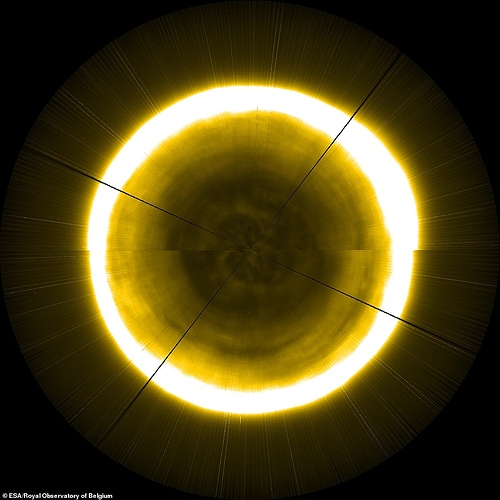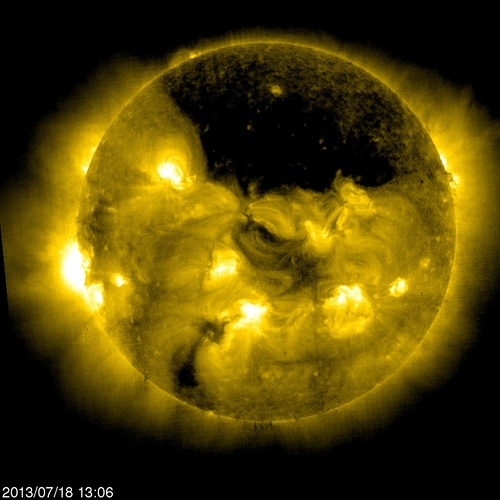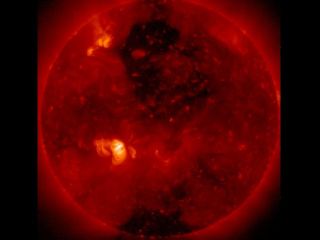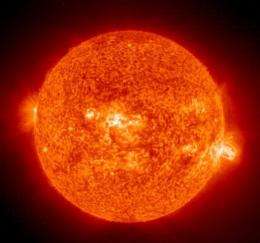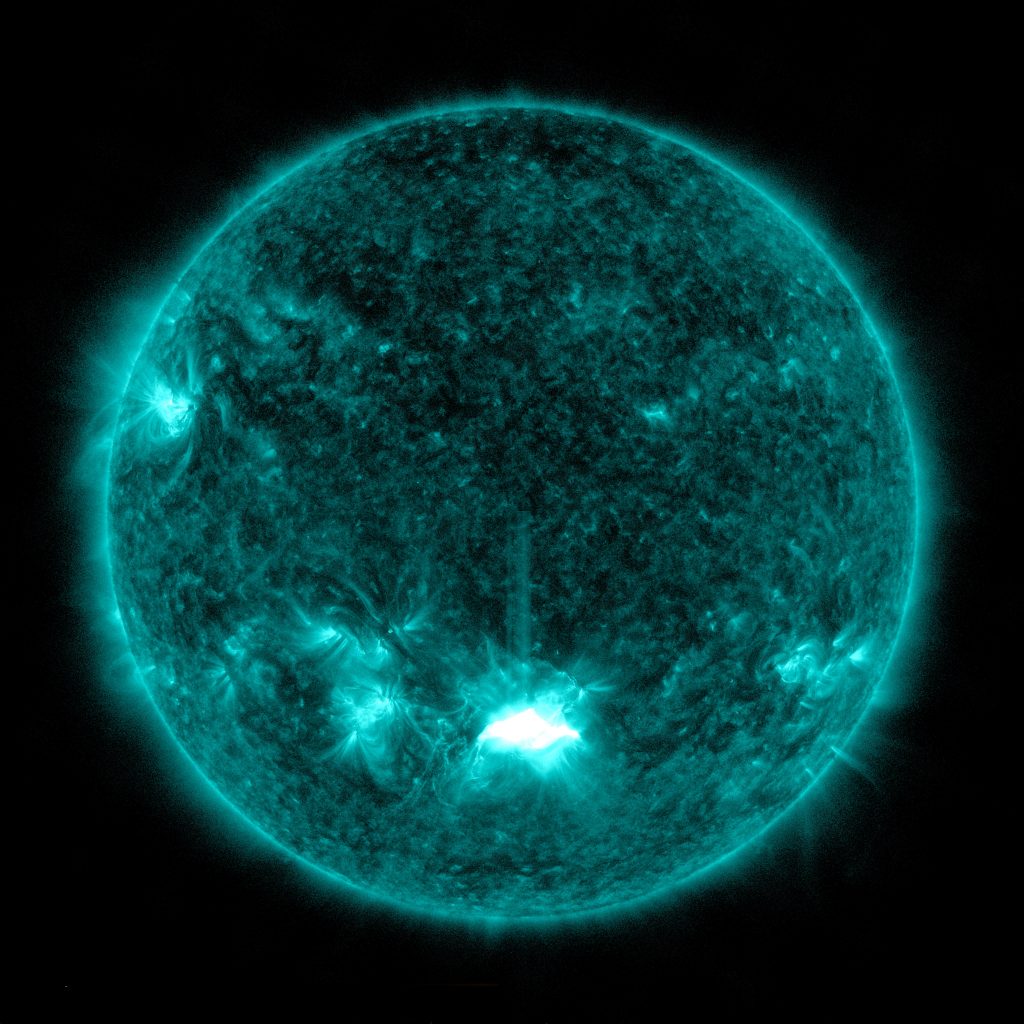List members , just take a look at the biggest RABBIT HOLE of our Solar System - the North Polar Opening of our HOLLOW Sun , Aha !!
Stunning image of the sun's North Pole could finally solve the mystery of why giant holes form on the solar surface
- Stunning images could revolutionize our knowledge of the solar surface
- Artificial image one of the best images yet of the mysterious region
- Researchers were forced to piece together pictures of the Sun’s polar regions
Scientists have revealed an unprecedented view of the sun's North Pole.
The stunning images could revolutionize our knowledge of the solar surface, and give new insights into how storms that batter Earth with magnetic particles form.
Researchers say the artificial image of the solar north pole is one of the best images yet of the mysterious region.
Scroll down for video
+2
The sun's North Pole: The line across the middle is created due to small changes in the solar atmosphere that occurred over the timeframe of creating this image. This image also shows a bright bulge on the upper-right side of the Sun; this is created by a low-latitude coronal hole rotating around the solar disc. The polar coronal hole region, which can be seen as the dark patch in the centre of the solar disc, is a source of fast solar wind. It is seen here to contain a subtle network of light and dark structures, which may cause variations in solar wind speed.
'We’ve sent numerous missions into space to study the Sun, however, most of these spacecraft have focused mainly on the equatorial regions of the Sun,' the European Space Agency said.
This lack of imaging data meant researchers were forced to piece together pictures of the Sun’s polar regions.
The image extrapolates low-latitude Proba-2 observations of the Sun to reconstruct a view of the star’s pole.
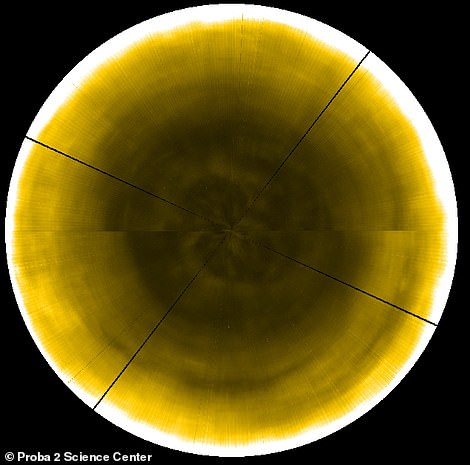
The above image includes off-limb structures, whereas this one has had this removed.
While the poles cannot be seen directly, when spacecraft observe the solar atmosphere they gather data on everything along their line of sight, also viewing the atmosphere extending around the disc of the Sun (the apparent glow around the main disc of the Sun, which also extends over the poles).
'Scientists can use this to infer the appearance of the polar regions,' ESA said.
In order to estimate the properties of the solar atmosphere over the poles, researchers continuously imaged the main disc of the Sun and take small slivers of data from the outer and upper regions of the star as it rotates, compensating for the fact that the Sun does not rotate at constant speeds at all latitudes.
Over time, these small arrays of data can be combined to approximate a view of the pole, as shown in this view.
Researchers say the data could reveal many of the sun's secrets.
THE PROBES SENT TO THE SUN
Past and present solar explorers include ESA’s Proba-2 (PRoject for OnBoard Autonomy 2) and SOHO (SOlar Heliospheric Observatory) probes, NASA’s SDO and STEREOmissions (the Solar Dynamics Observatory and Solar Terrestrial Relations Observatory, respectively), and the joint NASA/ESA Ulysses mission.
However, most of these spacecraft have focused mainly on the equatorial regions of the Sun, with the notable exception of Ulysses – this probe observed our star at a wide range of latitudes for nearly two decades, until the mission came to an end in 2009.
Despite Ulysses’ insights, this focus on low solar latitudes has left the Sun’s poles relatively unexplored.
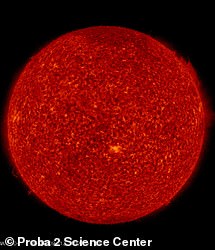
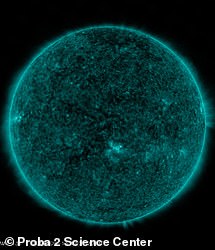
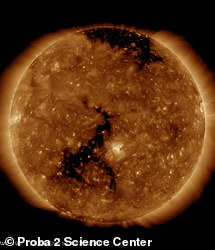
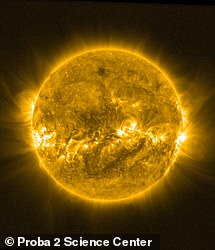
The images above show the Sun in four different wavelengths (which roughly show the sun in different temperatures)
'The most obvious area of research revolves around study of the polar coronal holes, and especially their boundaries, in particular studying the dynamics of a process known as interchange reconnection occurring between open (coronal hole region) and closed magnetic flux (quiet sun) at the boundaries,' wrote Matthew West.
'On longer time-scales we can also further study the formation of the polar coronal holes.'
Wave propagation in the polar regions, and the heating processes on the sun are also set to be studied.
ESA’s Solar Orbiter aims to plug this knowledge gap when it launches in 2020.
This mission will study the Sun in detail from latitudes high enough to explore its polar regions, also revealing how its magnetic field and particle emissions impact its cosmic environment – including the area of space that we call home.
Large Coronal Hole Near the Sun’s North Pole
July 19, 2013
The European Space Agency/NASA Solar and Heliospheric Observatory, or SOHO, captured this image of a gigantic coronal hole hovering over the sun’s north pole on July 18, 2013, at 9:06 a.m. EDT.
Image Credit:
ESA&NASA/SOHO
The European Space Agency/NASA Solar and Heliospheric Observatory, or SOHO, captured this image of a gigantic coronal hole hovering over the sun’s north pole on July 18, 2013, at 9:06 a.m. EDT. Coronal holes are dark, low density regions of the sun’s outermost atmosphere, the corona. They contain little solar material, have lower temperatures, and therefore, appear much darker than their surroundings.
Coronal holes are a typical feature on the sun, though they appear at different places and with more frequency at different times of the sun’s activity cycle. The activity cycle is currently ramping up toward what is known as solar maximum, currently predicted for late 2013. During this portion of the cycle, the number of coronal holes decreases. During solar max, the magnetic fields on the sun reverse and new coronal holes appear near the poles with the opposite magnetic alignment. The coronal holes then increase in size and number, extending further from the poles as the sun moves toward solar minimum again. At such times, coronal holes have appeared that are even larger than this one.
The holes are important to our understanding of space weather, as they are the source of a high-speed wind of solar particles that streams off the sun some three times faster than the slower wind elsewhere. While it’s unclear what causes coronal holes, they correlate to areas on the sun where magnetic fields soar up and away, failing to loop back down to the surface, as they do elsewhere .
Regards

